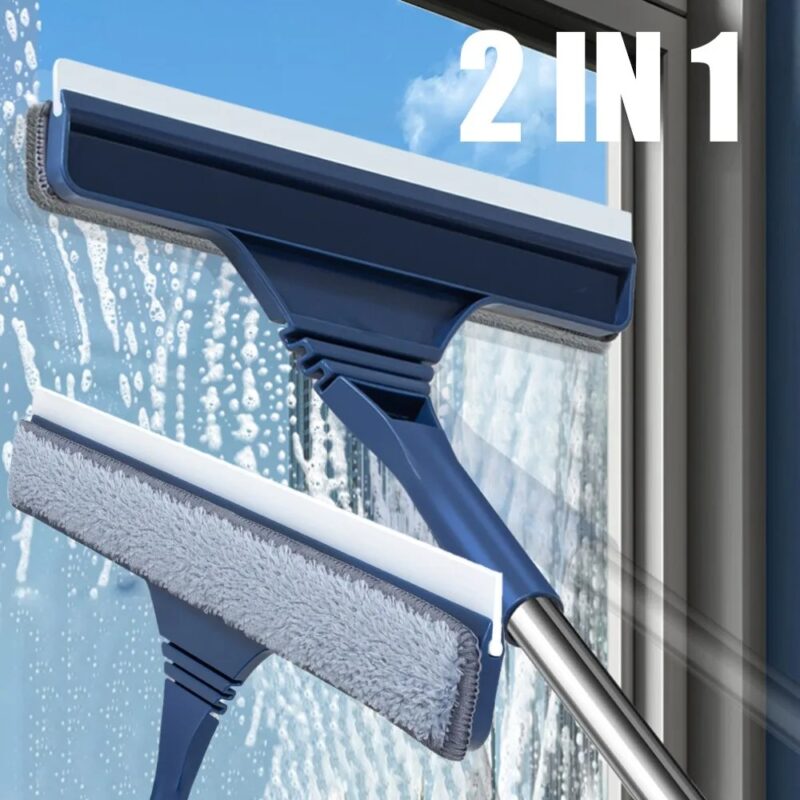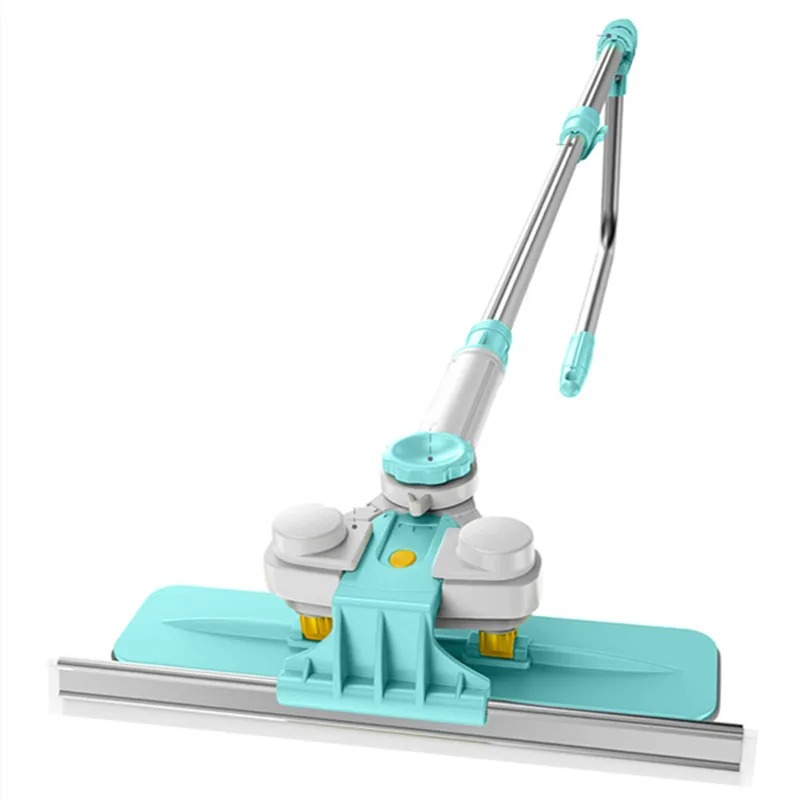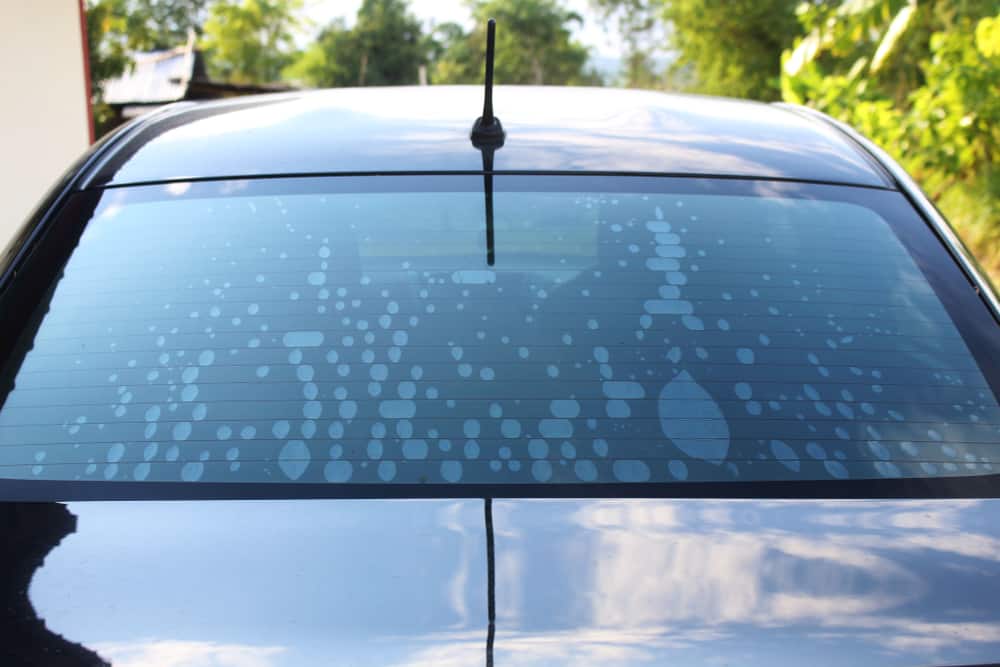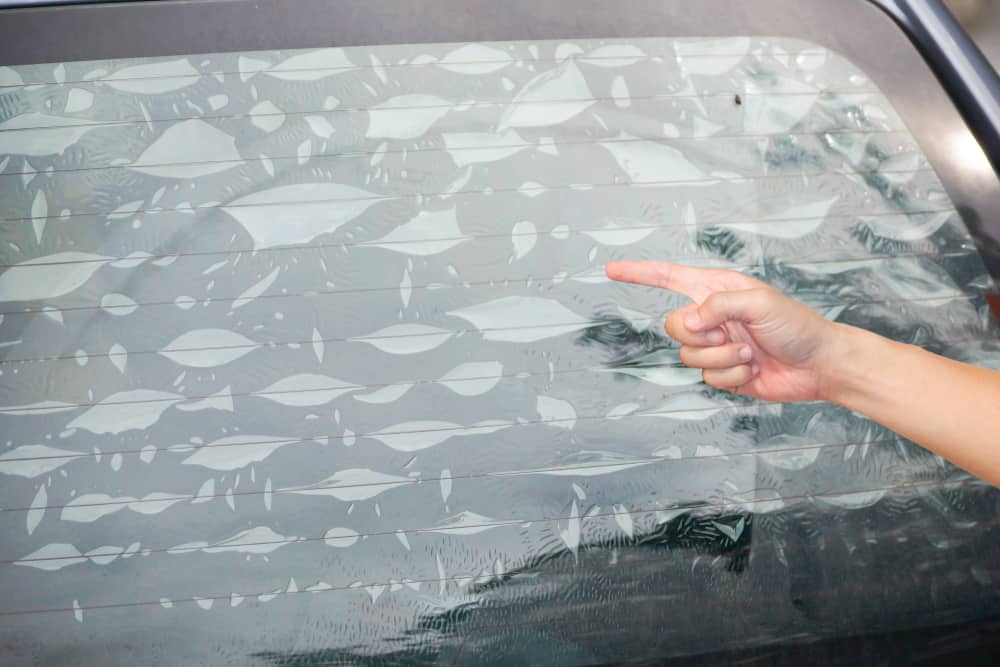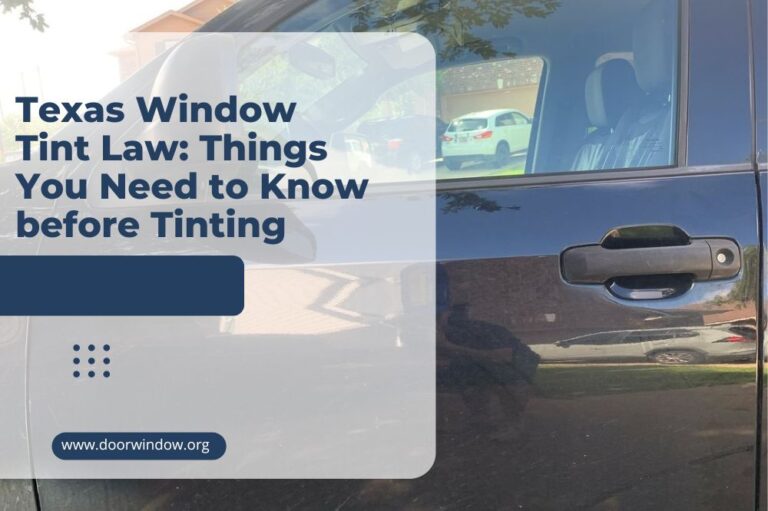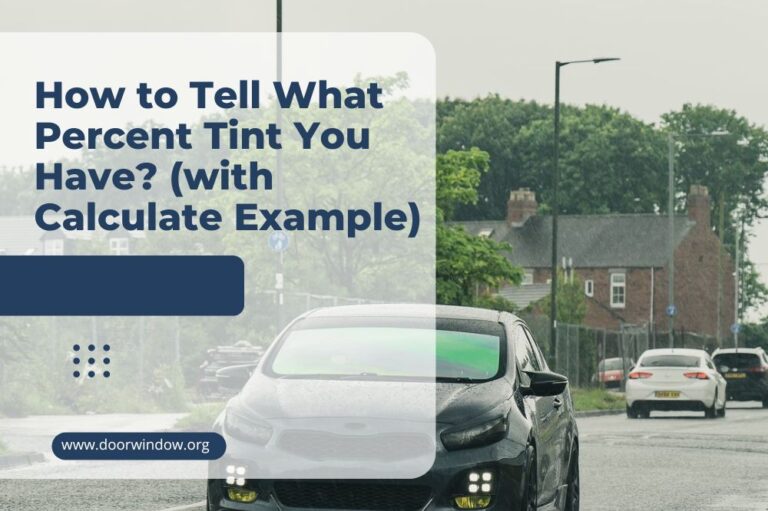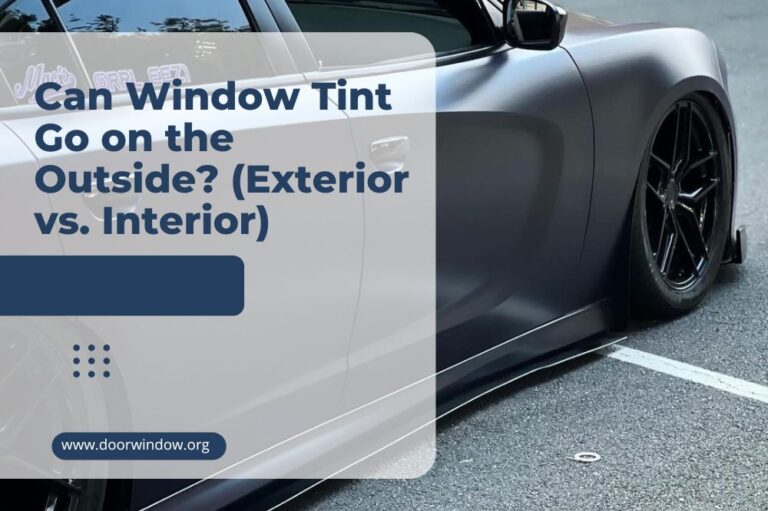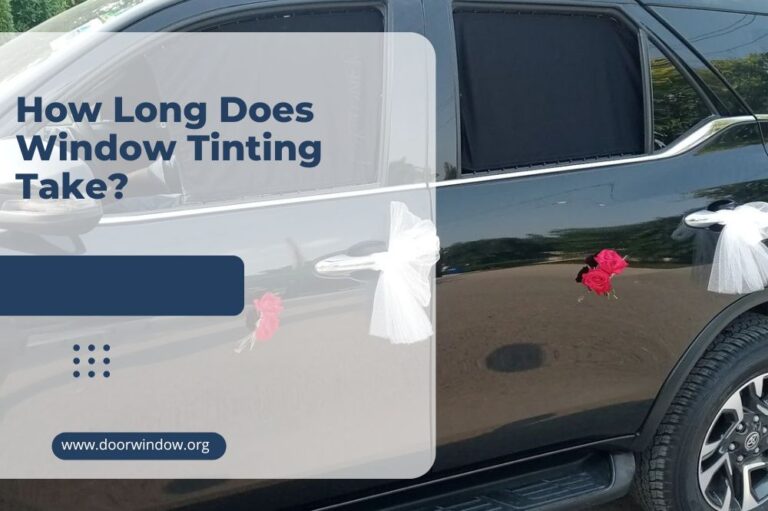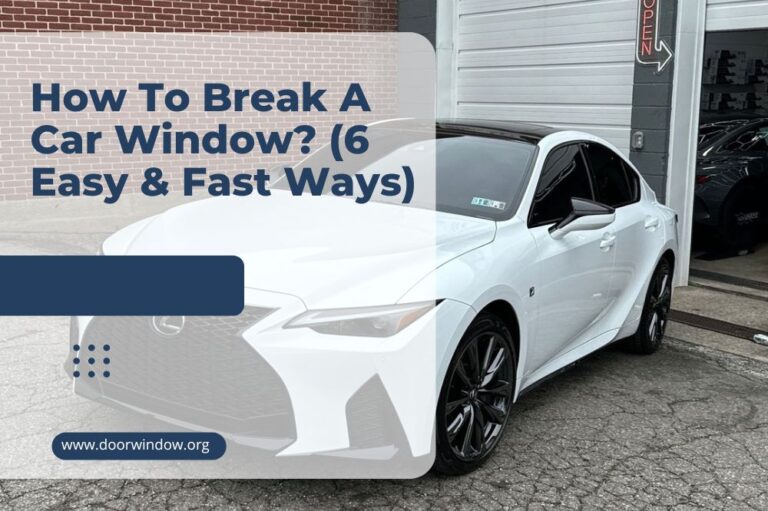Why Does Window Tint Bubble? (Types, Causes & Prevent)

If you are one of window tinting supporters, you have probably faced the question of why does window tint bubble at least once. In most cases, it is an expected part of the procedure and appears on the newly installed film.
Since these bubbles often result from the trapped water between the glass and film, you can expect them to disappear after approximately seven to ten days. However, bubbles that don’t vanish within that period are a sign of failed installation, adhesive failure, or film issues. Let’s take a look.
Window Tint Bubbles
Window tinting is an excellent option for your car or home since the applied film protects the inside from high temperatures and harmful UV rays. Additionally, this solution will beautify your home or vehicle and increase your privacy.
Unfortunately, ugly bubbles can ruin your satisfaction. Sometimes, it is possible to repair that problem after determining the reason for their appearance on the glass surface. In any case, tinted windows require compliance with specific rules.
1. Bubbles and hazy windows are expected right after tinting
Regardless of the film quality, bubbles and hazy windows are expected right after tinting. Remember that it never lasts long if you use top-notch material and hire a skillful and reputable professional.
Be patient and wait for the film to dry and enjoy its benefit. Yes, tinting will protect you from sunlight and UV rays even during drying.
2. The drying period varies depending on the season and weather conditions
The film will dry and cure within two to four days of applying if you do that during the summer. If you opt to have your windows tinted in winter, they will require at least three to four weeks to dry entirely.
3. The tint film is scratch-resistant but not indestructible
Be aware that the window tint film you apply over the glass makes it pretty scratch-resistant, but it can’t withstand direct impact, scratching, and cutting. Therefore, you should give your best to protect it from sharp objects, including sports equipment, seatbelt metal buckle, and sharp-angled boxes.
There is one more thing! Be careful when rolling down the windows right after film application to prevent it from scraping off. You can do it only when the tint cures, typically after:
- A few days in the summer
- Up to a month in winter
4. Be careful while washing tinted windows
It is better to avoid washing the vehicle immediately after applying the film until it cures entirely. Only that way it is possible to shorten the drying period.
As soon as the film dries, it is time to clean your car. Always use a window cleaner created explicitly for the tinted film, or use a DIY product, like:
- Water vinegar solution
- Water soap solution
- Aerosol spray cleaner
Window Tint Bubble Types
1. Water bubbles
Initially, you can notice some bubbles on the glass surface after applying. They are a result of trapping moisture from the adhesive between the film and glass. They typically disappear after two to three weeks. Otherwise, you should consult a specialist and find a way to solve the problem.
2. Air bubbles
These bubbles will cause a hazy hue on the window surface, but they will shrink over time.
3. Soap bubbles
Unlike water bubbles, soap ones never entirely disappear. They will only shrink while the adhesive cures and stay there until replacing the film with the new one. The reason for their appearance is applying an inadequate pre-tint window cleaning product before applying the film.
4. Dirt bubbles
After applying the film over dirty glass, you will get this bubble type over the window surface. Unfortunately, these bubbles will get larger over time, and you can’t do anything to solve this problem.
5. Blisters
These bubbles are the worst option you can get. Their appearance indicates that the used adhesive is stale, and they will become worse and spread out across the window surface over time.
What Causes Window Tint Bubbles?
Window tint bubbles appear when something is trapped between the film and window glass. Sometimes, you can notice them immediately after installation, and it is quite normal to see them during the first ten to twenty days.
If that period prolongs to more than two weeks, you can be sure that something is wrong, and it is time to consult a professional.
- Water drops – Often, water droplets get stuck between the window and film, but they evaporate within two weeks on average.
- Air – Sometimes, the installer is not skillful enough and leaves air bubbles under the film layer. You can find DIY methods to solve the problem, but the result can be questionable.
- Dirt – This thing happens only when the installer doesn’t clean glass appropriately and leaves some dirt and old film residue under the film. Therefore, you should hire only professionals who are aware of the importance of proper window cleaning.
- Cheap film – Be aware that only low-quality film tends to fade, get purple, and bubble. In most cases, the reason is poor quality and cheap adhesive that changes and melts under the sun.
Ways to Prevent Window Tint Bubbles
As I have already mentioned, bubbles can appear after applying in most cases, but they should disappear after a few days.
Unfortunately, it is not the case in all situations, and they can expand under sunlight exposure and cause an unsightly window appearance. Therefore, you should give your best to prevent their formation.
1. Follow the standard procedure
Always follow the established standard procedure when applying the film. That is the only way to prevent bubbles from forming.
- Thorough cleaning before the film application
It is crucial to prepare windows for tint application thoroughly. Only proper glass washing and drying will prevent bubble formation.
Use for cleaning and degreasing glass and avoid blue-colored liquid cleaners that almost always contain harmful ammonia. It causes film corroding and premature peeling off, causing bubbling.
In most cases, using homemade cleaners made of white vinegar or soap solution on a microfiber cloth will be enough.
- Quality tint film
As you can imagine, numerous window tint films are available on the market. Unfortunately, some installers use sub-standard quality film with a short lifetime.
Even though such a product looks nice and is inexpensive, you will face numerous problems after a few years. One of the first things to appear is bubbles.
The only way to prevent them is to invest in quality window film featuring an adhesive resistant to high temperatures and the related warranty.
- Professional installation
The best option is to engage a reputable, skilled, and certified professional who is aware of the importance of the right preparation and knows to finish the job carefully and without bubbles appearing.
Always ask for a warranty and avoid installers who don’t provide it. Only experts in the field will be prepared to guarantee a high-quality service. You can also do it as a DIY project, but it often ends up with ugly bubbles and additional expenses.
2. Read the instructions
You can tint windows on your car or home yourself if you are skillful enough. Always carefully read the instructions before starting installation. Be aware that it is not an easy job, and many things can go wrong if you miss only one step.
3. Avoid DIY bubble fixing techniques
You can find various DIY solutions to solve the issue with bubbles and get rid of them. Most ‘experts’ say it is enough to warm the tint and moisten the window before poking a tiny hole in the film.
Then, you should reheat it and smooth the bubbles with a credit card while holding it at a 45-degree angle. However, be careful with this solution since it comes with numerous downsides, including:
- Impossibility to find a solution for low-quality adhesive – Bubbles often form due to the low-quality glue. After degrading, it is not strong enough to hold the film firmly attached to the glass. Whatever you do, it won’t help to solve the problem with an un-sticky adhesive.
- Puncturing the film does more harm than good – You can squeeze the air from the bubble after warming the film, but it is only a temporary solution. The air will come back through a pocked hole within a few days, followed by water, grease, and dirt.
- The hole can quickly become a weak spot – You can expect that the film will probably tear starting from the hole pocked to squeeze the air. Remember that most low-quality tint films are brittle and often look worse than before when trying to solve the bubble issue.
Window tinting benefits
A quality window tint film has numerous benefits, and you should consider applying it in your home and car. That way, you will:
- Protect your skin and eyes from harmful UV rays
- Reduce glare and improve visibility while driving
- Keep the inside temperature at an acceptable level
- Prevent car interior and furniture fading
- Prevent the glass pieces from scattering after an accident
Summary
Most drivers and homeowners like window tints because of their numerous benefits. However, only professionally applied film will look beautiful and protect you from sunlight.
That means any bubbles appearing on the glass surface are entirely undesirable and unacceptable. Be aware that seeing them is expected immediately after applying, but any prolonged retention requires intervention.

